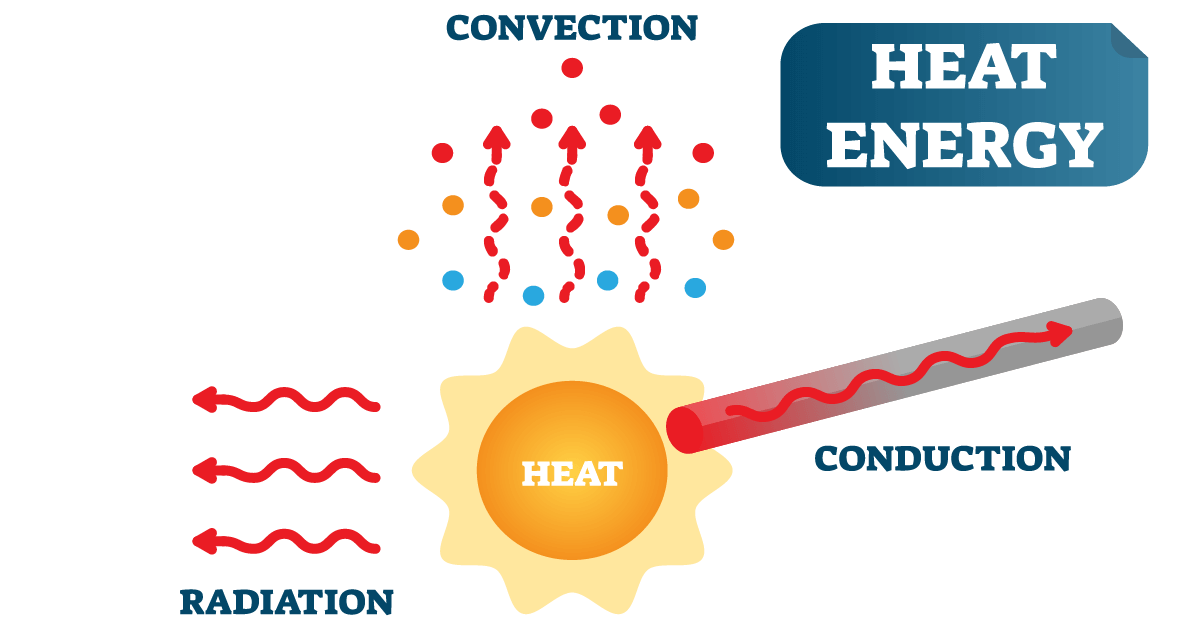Convective heat transfer refers to the movement of thermal energy within fluids. Convection occurs due to the bulk movement of molecules within the liquid, gas, or liquid-gas mixture. Initially, heat is transferred between molecules via conduction, but the main heat transfer is via the motion of molecules within the fluid.
- Convection is the process of thermal energy exchange in fluids via the motion of matter within them.
- A bulk transfer of molecules within the fluid occurs.
- It occurs in both gases and liquids and leads to a cyclical effect.
- Both natural and forced convective heat transfer exist.

Consider a liquid warmed over a heated surface. As the lower levels of the fluid increase in temperature, they become less dense. The heated layer then rises due to buoyancy and is replaced by colder fluid. The new lower layer then becomes heated, rising and replacing the cooler, denser upper layer. This causes convection’s cyclical effect.
Heat transfer coefficient
The heat transfer coefficient is the rate of heat flow between a surface and a fluid. The rate is proportional to the temperature difference between the two materials. It is dependent upon the physical properties of both and is not a property of the fluid. The value of the heat transfer coefficient depends on variables such as surface geometry, the fluid’s properties, bulk fluid velocity, and the nature of fluid motion.
Types of convective heat transfer
There are two types of convection: natural and forced.
- Natural convection – This is caused by buoyant forces due to a difference in density connected to temperature differentials. When the fluid comes in contact with a hot surface or atmosphere, the molecules are separated and scattered, reducing the fluid’s density.
- Forced convection – This is when the fluid undergoes forced flow from an outside source such as a water heater, pump, or fan.
Examples of convective heat transfer
Several examples of convective heat transfer exist in nature. Forced convection is an artificial process.
Natural convection examples:
- Hot air rising above a fire
- Ice melting
- Sea breeze or land breeze caused by a difference in pressure
- Blood circulation in warm-blooded animals
Forced convection examples:
- Air conditioning
- Car radiators
- Water heaters/boilers
- Convection ovens
Conclusion
Convective heat transfer is a physical process. It governs both natural and artificial systems and is essential for industrial applications.
Thermal engineers use a variety of tools to control the convective heat flow within an application or system. Thermal management typically refers to technology designed to increase heat transfer. Thermal insulation typically refers to technology designed to reduce heat transfer. Thermal engineering can help systems become more energy efficient by maintaining correct and safe operating temperatures.